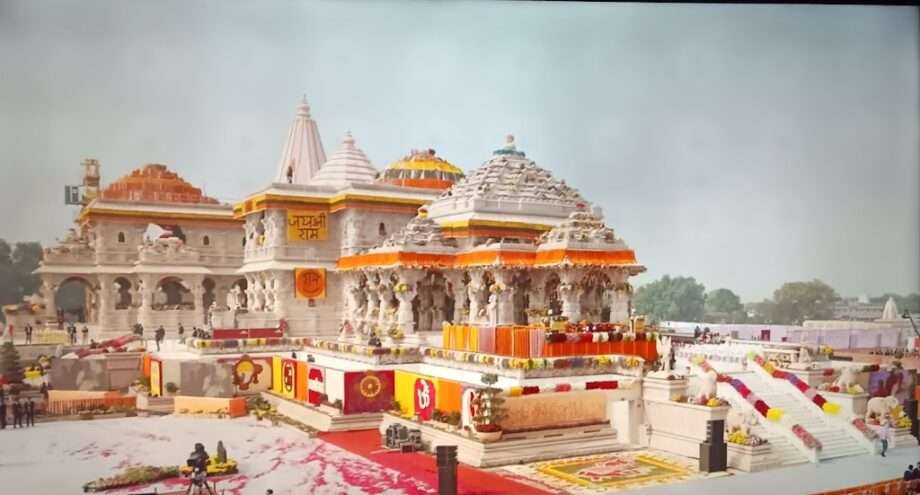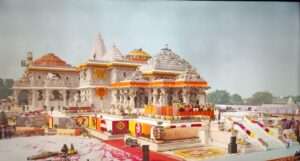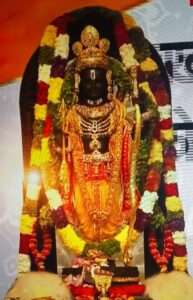Ayodhya Ram Mandir – Its Historical Significance.
Table of Contents
1-Ayodhya -Birthplace of Lord Rama, which is why, it is a very pious place for all Hindus around the world. Ramayana and Ram Charit Manas are the most respected books for Hindus. The epic is closely related to the history of Ayodhya Ram Mandir. Lord Rama is the 7th incarnation of Lord Vishnu. He was the eldest son of the King of Ayodhya, Raja Dasrath, and was born in Ayodhya.
The recently built grand magnificent temple is located at the precise birthplace of Lord Rama. It gives Ayodhya and the Ram Mandir its significance. About 500 years ago Mughal ruler Auranjeb ordered his Lieut Mir Baki to demolish this temple and construct a mosque at the same place. That mosque was built on the remains of the temple and known as Babri Masjid. There was a long fight by the Hindus, to recover it. Later on, it was demolished. 2- Legal fight in the Supreme Court and final verdict after
years of legal fight and political maneuvering, the Supreme Court of
India delivered a historic verdict in November 2019. It was in the favour of Ram Lala Virajman. Thus the path of the construction of this Ram temple was cleared of all the hurdles. The verdict was
hailed as a landmark in India’s history. 3–The foundation stone of Ayodhya Ram Mandir–
In August 2020, Prime Minister Narendra Modi laid the foundation stone for
the construction of the Ram Mandir, marking the beginning of a new chapter
in Ayodhya’s history. The event was attended by many dignitaries from across
the country and worldwide. 4: Ayodhya Ram Mandir, its Architecture- It is a magnificent architectural marvel made in Indian Nagar-Shaili architectural design, blending traditional Indian temple architecture with modern construction techniques. 5-Ayodhya Ram Mandir’s Design- It was designed by the world-famous architect Chandrakant Sompura, who is an expert in temple design. His many generations were involved in this field. More than 100 temples were designed by them. He was assisted by his son Ashish Sompura. The temple is a magnificent architectural marvel, blending
traditional Indian temples with modern construction
techniques. It has 392 pillars and 5 mandaps. 6-The temple complex. Features intricate carvings, ornate
domes, and sprawling courtyards, accompanied by idols of Rani Sita, Lord Ram’s loyal devotee Hanuman, and his brother Lakshmana. Besides, there will be many other temples devoted to Rishi Balmiki, Muni Vasisth, Shabri Mata, and many more.
The temple complex will also include various facilities for pilgrims,
including accommodation, dining halls, and meditation centers. 7-Ayodhya Ram Mandir is a uniting force Ram Mandir represents more than just the construction of
a religious edifice. It symbolizes the face of faith, adversity, and
the spirit of unity amidst diversity. It also serves as a reminder of India’s
rich cultural heritage and the legacy of Lord Rama, who continues
to inspire millions with his teachings of righteousness, duty, and
devotion. Below is the idol of Ramlala in Ayodhya Ram Mandir.
To end with, The Ram Mandir in Ayodhya is not merely a temple, it is a
symbol of India’s pluralistic culture, where people of diverse faiths and
backgrounds come together to celebrate their shared humanity and reverence
for the divine. As pilgrims and visitors flock to Ayodhya to pay homage to
Lord Rama, they also bears witness to the enduring power of faith and the
The everlasting allure of spiritual enlightenment. Satish Tripathi sctri48



